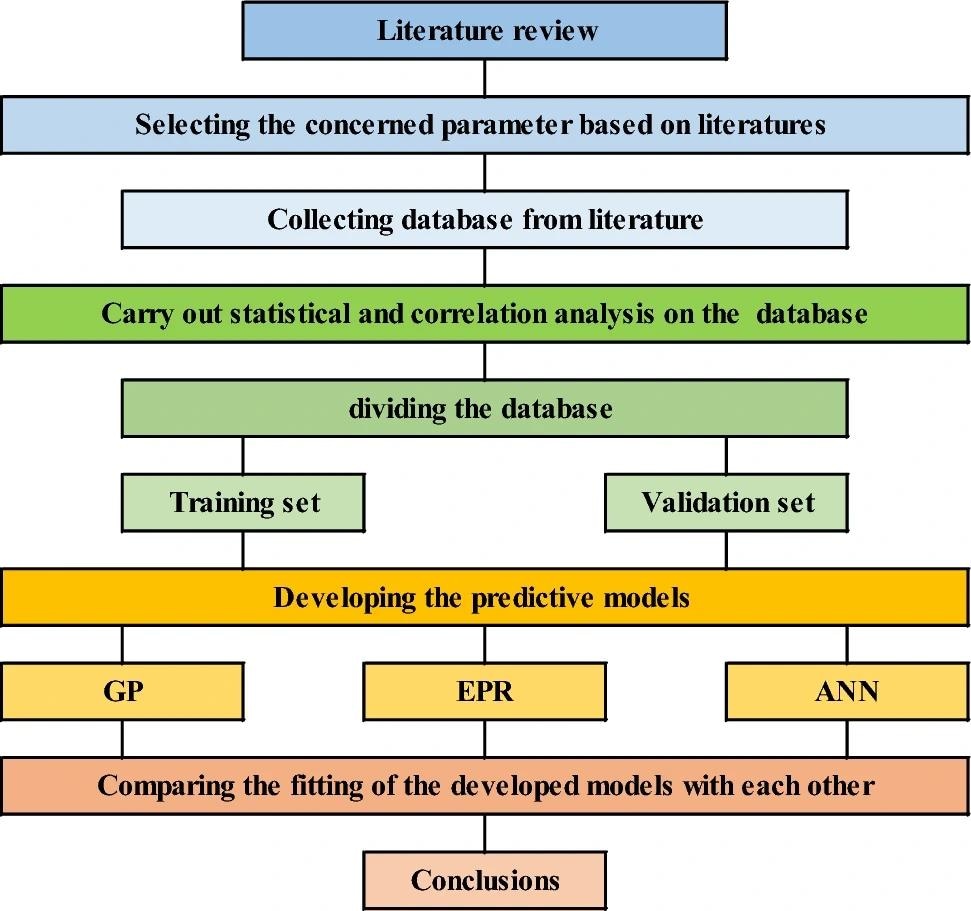In a recent article published in the journal Scientific Reports, researchers introduced artificial intelligence (AI) models to estimate energy consumption for residential buildings in semiarid and arid desert climates, using various building characteristics and environmental factors as inputs. They also compared the performance of three different models and identified the most influential parameters affecting energy consumption.
 The used methodology flowchart. Image Credit: https://www.nature.com/articles/s41598-024-63843-w
The used methodology flowchart. Image Credit: https://www.nature.com/articles/s41598-024-63843-w
Background
Energy is an essential aspect of sustainability due to its increasing consumption worldwide and its contribution to climate change and environmental concerns. One critical measure toward efficient energy production, distribution, and consumption is accurately forecasting energy consumption in buildings. These buildings represent a large portion of energy consumption and hold significant potential for reduction.
However, estimating energy consumption is complex and challenging, as it depends on various factors such as building characteristics, weather conditions, occupant behavior, and equipment usage. Therefore, reliable and robust methods are needed to capture the complex and nonlinear relationships among these factors and produce accurate predictions.
About the Research
In this paper, the authors aimed to develop three AI models to predict energy consumption for residential buildings in desert climates. Their technique uses inputs such as building dimensions, orientation, envelope construction material properties, window sizes, glass properties, and target inside temperature. The three AI techniques employed were genetic programming (GP), artificial neural network (ANN), and evolutionary polynomial regression (EPR).
GP is a technique that uses mathematical expressions to fit the data, allowing for the discovery of nuanced interactions and patterns. The ANN, inspired by the human brain's structure, excels at learning from large and complex datasets, thereby modeling complex relationships. EPR combines the flexibility of polynomial regression with evolutionary optimization, enabling the discovery of optimal polynomial expressions while minimizing overfitting. These techniques offer significant advantages over traditional methods by capturing non-linear relationships, adapting to diverse datasets, and producing accurate predictions.
The study utilized a large database of 11,500 records of energy consumption for various buildings with different characteristics, obtained from a previous study that used the Energy Plus package to simulate energy demand. The database was randomly divided into 9000 records for training and 2500 records for validation.
The AI techniques were then applied to the training data to develop predictive models, and their performance was evaluated on the validation data using metrics such as root mean squared error (RMSE), the coefficient of determination (R²), and mean error percent (Error%). Additionally, the relative importance of each parameter on energy consumption was analyzed using the ANN model.
Research Findings
The outcomes showed that the EPR model was the most accurate, with an error percentage of 2%. It was followed by the GP model, with an error percentage of 7.6%, and the ANN model, with an error percentage of 8.4%. The EPR and GP models also provided closed-form formulas that could be easily used or embedded in software, whereas the ANN models were complicated.
Furthermore, the authors identified that five parameters had the most significant influence on energy consumption: the building size (length, width, and height), the target inside temperature in summer (cool), and the solar heating glass coefficient (SHGC). These five parameters accounted for 87% of the impact on energy consumption, while the remaining parameters only shared 13%. In summer, the target inside temperature was the most influential factor, with an importance of 25%, due to the database being generated for a semiarid and arid desert climate, which is warm in winter and hot in summer.
Applications
The study has several applications for improving the energy efficiency and sustainability of residential buildings in desert climates. The developed models can be used to estimate energy consumption during the conceptual design stage, allowing for the evaluation of multiple design alternatives and the selection of the most optimal one. It can also identify the most influential factors on energy consumption, enabling the proposal of targeted interventions and modifications to enhance energy performance. Additionally, it can be integrated with building management systems for real-time monitoring, optimization, and feedback of energy consumption, empowering occupants to make informed decisions and reduce their energy demand.
Conclusion
The researchers summarized that the AI models were accurate and reliable for predicting energy consumption in buildings within desert areas. The models effectively identified several factors influencing energy consumption and could contribute to advancing energy efficiency and sustainability in the built environment.
They suggested that future work should focus on incorporating additional data sources, such as occupant behavior profiles and weather data, to enhance energy simulation models. They also recommended combining AI methods with physics-based simulation models to leverage the strengths of both techniques. Additionally, they proposed applying pre-trained models on datasets from other desert areas to enhance the generalization and transferability of the AI models.